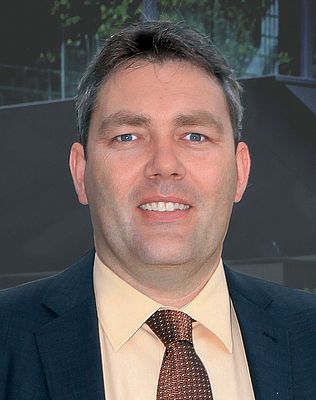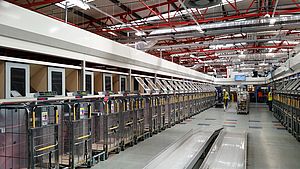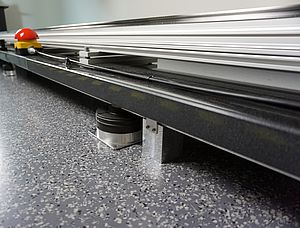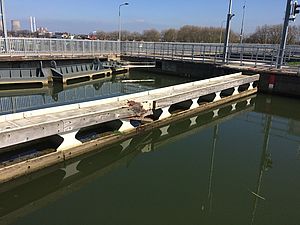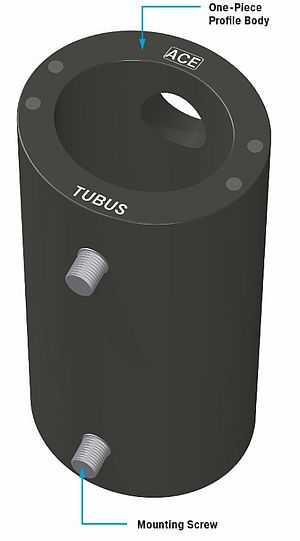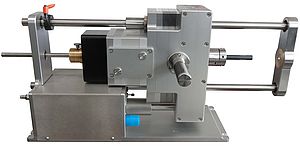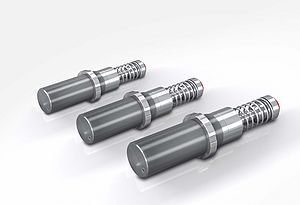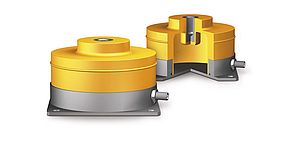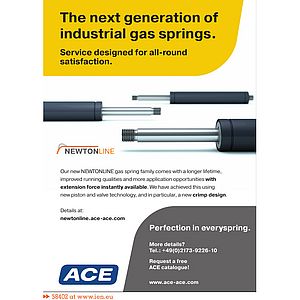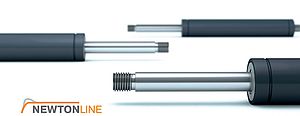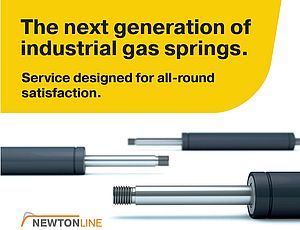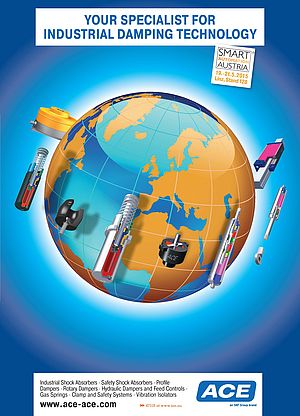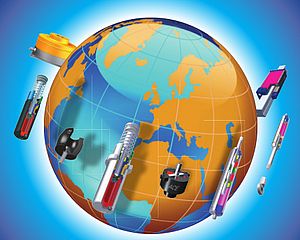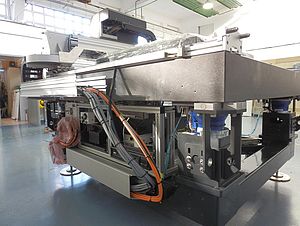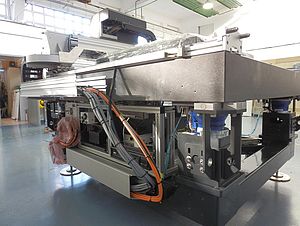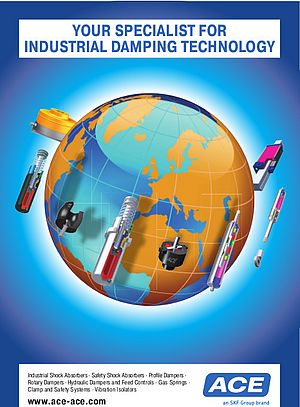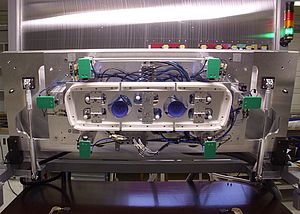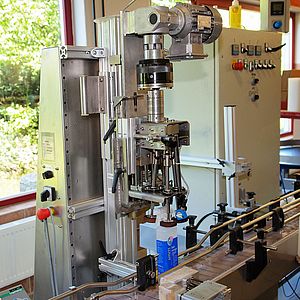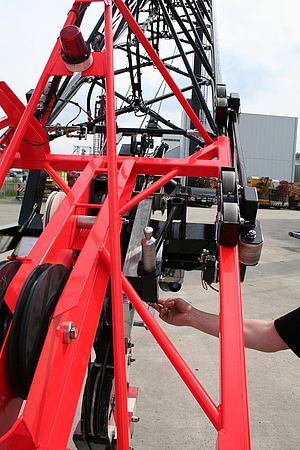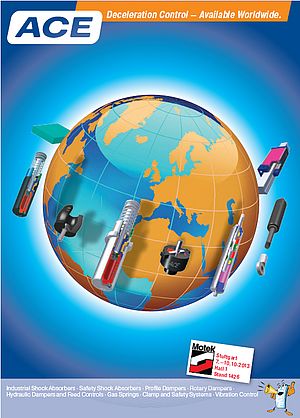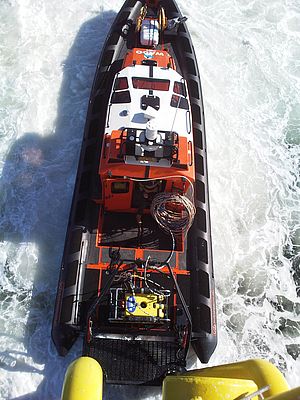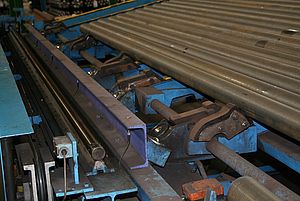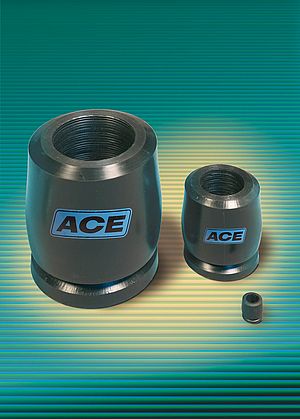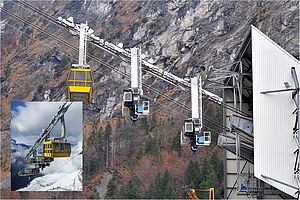IEN: Your shock absorbers, dampers, gas springs and feed controls are applied in a huge variety of industrial branches. They are used in the medical, test and measurement and stage technology, as well as in the steel, furniture and food industry, but also in testing stations for the automotive industry and public supply systems for power, water and telecommunication. In terms of revenue: Which branch is the core of your business?
Roland: The core of our business is undoubtedly the general machine building industry. By supplying the multifunctional automation technology to the machine building industry, we serve almost all industrial branches.
IEN: How do you distribute your products and services on an international level? Do you have a branch-oriented distribution system?
Roland: ACE Controls International has six global distribution centres, and in all those countries where we are not present with our own subsidiary, we have a long-term cooperation with experienced distributors. Those partners all have a market-oriented stock, and support our customers with ACE-trained technical sales and service teams. As a matter of fact, ACE works application-oriented, not branch-oriented.
IEN: The huge variety of applications mentioned above certainly requires a great deal of adaptation regarding your products. What is the share of so-called catalogue products, and how many of your products do you really have to adapt to customer-specific demands?
Roland: Our aim regarding customer applications is to be involved at a very early stage, that is already when a machine is designed and developed, in order to deliver the maximum benefit of our stock products to our customers. The 80%/20% Pareto principle really is effective here, but what we regard as „customer-specific“ are really major changes in the basic design of our products.
IEN: One of the most recent product innovations from ACE have been protective caps for miniature shock absorbers, in order to prevent damage by aggressive coolants, lubricants or detergents. Are those product innovations market-driven, or do they proactively come from your R & D department?
Roland: The process of innovation is manifold and hard to control. A market-driven solution is always easier to implement, since the motivation to deliver drives the development. Other innovations are initiated by a kind of domino effect to successful product launches, or as a reaction to certain mega trends such as miniaturization.
IEN: From which lot size on do you adapt your products to customer-specific applications or supply further developments?
Roland: We produce customer satisfaction from lot size one onwards.
IEN: Where do you see potential for optimization in damping technology in the near future?
Roland: One area for optimization certainly is merging the shock absorption in the area of the joint and vibration. The new dynamics of the gearless or direct drives shifts the actual shock absorption from the stroke end to the isolation of the entire machine or single constructive parts and entities.
IEN: Mr Roland, thank you very much for the interview
Facts & Figures
Employees: 68
Revenue 2009: 21 Mio. Euros, expected revenue 2010: 28 Mio. Euros Headquarters: Langenfeld, Germany
Subsidiaries in 45 countries, on all continents
Main products: Industrial and safety shock aborbers, dampers, damping plates, speed/feed controls, gas springs


